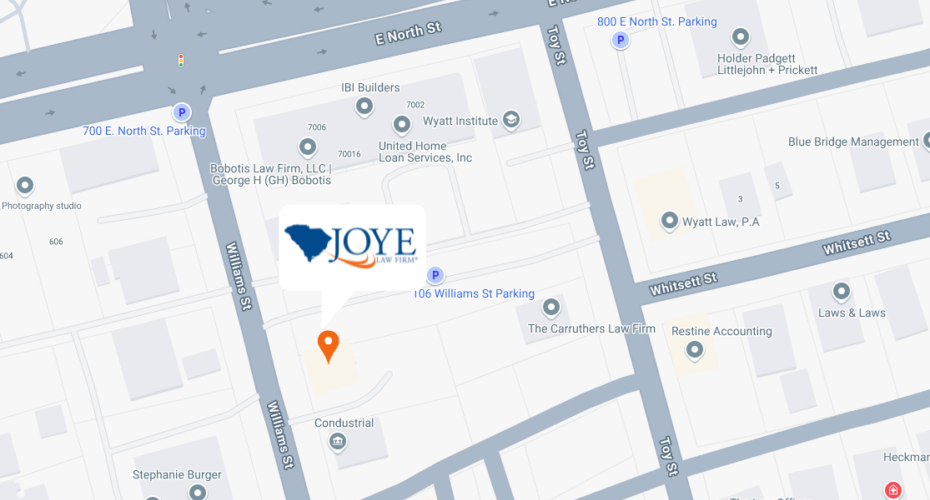
A recent report in a safety publication for employers points out that much of the cost of a worker’s job-site injury is indirect and often hidden. These costs are out-of-pocket for the employer, while the direct costs of an employee’s injury are typically covered by their workers’ compensation insurance company, which pays benefits to the injured worker.
Safety consultant Rick Barker uses the iceberg analogy in his article “Understanding the Total Cost of an Injury” for EHS Today. “The iceberg image conveys two important aspects about the types of costs,” he writes. “The more obvious point is that some costs are visible but accompanied by less visible costs. The iceberg image also conveys that more of the costs are hidden below the surface than are visible above it.”
Barker says that if safety managers could convey the total cost of worker injuries to key decision-makers, then workplace safety programs might get more attention, and, presumably, fewer workers would be injured.
We all support the idea of safer workplaces and fewer workplace injuries. As South Carolina workers’ compensation lawyers, our attorneys at Joye Law Firm have fought for injured workers for more than 50 years. We have seen many lives disrupted by preventable accidents and sought to help injured people rebuild their lives. We believe the iceberg analogy also applies to injured workers, as we’ll discuss below.
Direct Costs of a Workplace Injury
The direct or visible costs of a worker’s injury suffered on the job include:
- Medical treatment costs for the injured worker. This is the primary benefit of most workers’ comp claims. Once an injury suffered while on the job has put the employee out of work for seven days, in South Carolina, workers’ compensation is to pay for all medical costs related to the occupational injury.
The EHS article says that where employers provide onsite health services, some costs of medical treatment after an accident may be hidden costs absorbed by the company.
 The article also points out that “despite the legal and financial responsibility of the employer, some costs may fall to the employee.” This occurs too often because injured workers do not understand that 100% of medical costs are covered by insurance. Injured workers covered by workers’ comp should not have to pay out of pocket for medical expenses related to a workplace injury.
The article also points out that “despite the legal and financial responsibility of the employer, some costs may fall to the employee.” This occurs too often because injured workers do not understand that 100% of medical costs are covered by insurance. Injured workers covered by workers’ comp should not have to pay out of pocket for medical expenses related to a workplace injury.
- Wages for time lost by the injured worker. Workers’ compensation pays the injured worker about two-thirds of their average weekly pay while they are disabled.
- Disability settlements with an injured worker. In cases of permanent disability from a workplace injury, a workers’ compensation claim may end in a lump-sum settlement instead of weekly benefits for a defined period. This is a decision the worker and his or her family should consider carefully so that the tax consequences and other factors of the workers’ comp settlement are understood.
- Case management expenses. This is a company administrative cost, which will vary according to the type of workers’ comp insurance held (general policy, third-party administrator, or self-insured).
Indirect Costs of Workplace Injuries
 The indirect or hidden costs of a workplace injury are numerous. They revolve around the fact that the company has lost an employee due to injury, at least temporarily and possibly permanently. Remember, the focus of the article is to inspire employers to be more safety-minded, so they do not lose employees to preventable accidents.
The indirect or hidden costs of a workplace injury are numerous. They revolve around the fact that the company has lost an employee due to injury, at least temporarily and possibly permanently. Remember, the focus of the article is to inspire employers to be more safety-minded, so they do not lose employees to preventable accidents.
With an injured employee is forced off the job for medical care and recuperation, a company faces indirect costs from:
- Training costs. For the time of both the trainer and the person assigned to sub for the injured worker.
- Hiring costs. A new hire may be necessary. The more skills required of the injured person’s job, the higher the cost of replacing them.
- Overtime. If the workload is redistributed to cover for the absent worker, others will likely work more hours.
- Equipment damage or downtime. Damage to equipment may have resulted from the injury-causing accident. Equipment damaged in an accident will remain down while the accident is investigated.
- Investigation and documentation. Time-consuming work after an accident must be undertaken by employees who have other job duties.
- Lost productivity. The loss of productivity can vary dramatically, but there is almost always some after an accident and injury, EHS Today says. Disruptions that are serious enough can cut into revenue or threaten contracts if deadlines are missed.
- Loss of goodwill or reputation. A series of accidents and injuries can cause a drop in employee morale, which may lead in turn to lost productivity or more accidents. A series of incidents may become public and “could interfere with the goal of being an employer of choice in your area. This, in turn, could result in increased hiring costs for every position,” the article states.
It adds up quickly. An OSHA cost estimator cited in the article, which is part of the federal agency’s “$afety Pays” program, uses the average costs of selectable injuries and illnesses, a company’s profit margin, and an indirect cost multiplier to project the number of sales a company would need to generate to cover losses from a workplace injury.
The iceberg analogy used above to discuss the hidden costs of workplace accidents to businesses also applies to accident victims in many other instances, too. An injured person’s medical needs and expenses from a serious injury may not be obvious to the victim at first. In some cases, a third party (not the employer) may have contributed to the accident and have financial liability. An insurance company may offer a settlement that sounds big, but in fact, would not cover the injured workers’ losses. It’s part of our job as experienced injury lawyers to help identify all the present and futures accident-related costs and losses that our client will face and seek the full compensation available for law.
Get Help From a Workers’ Compensation Attorney
Workplace accidents can lead to serious injuries even in workplaces that pay attention to safety. If you’ve been injured while on the job, a workers’ compensation attorney from Joye Law can help make sure you receive all the benefits you are due, under South Carolina law.
Phone us at 877-941-2615 or contact us online from anywhere in South Carolina for a free review of your claim. Our goal is to have a positive impact on the lives of people who seek our help. We will not charge you any legal fee unless we recover money for you.







































